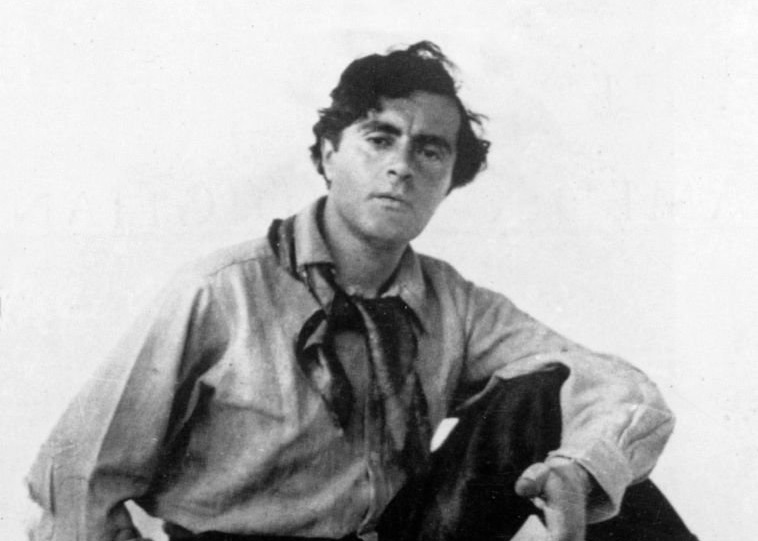Amedeo Modigliani, or “Dedo,” was the youngest of four kids. His parents, Flaminio and Eugenia, were Jewish. A large Jewish community resided in Livorno, Italy, where he was born. Right before he was born, the Modigliani family’s businesses struggled a lot, so they had to declare they could not pay their debts officially. In the 18th century, his family migrated to Livorno to escape a particular situation. Eugénie Garsin, Modigliani’s mother, came from a well-educated family living by the Mediterranean coast for many years. Her ancestors were knowledgeable in the teachings of the Talmud and could speak many languages. They also established a school dedicated to studying the Talmud.
When he was young, he had pleurisy and typhus, so he couldn’t go to school like other kids. In 1898, he started to learn how to paint. He stayed in Florence briefly in 1902 and then went to Venice to continue studying art. He remained in Venice until the winter of 1906 when he went to Paris. He liked Italian Renaissance paintings, especially those from Siena. He continued to select them for his whole life.
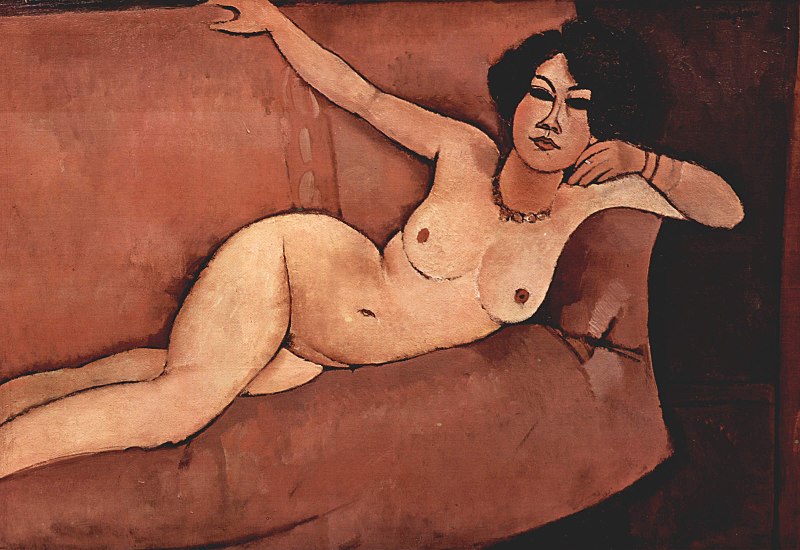
Modigliani was an essential artist in the École de Paris. He changed two subjects that have always been important in art: portraits and nudes. Modigliani’s paintings are known for their sad and long shapes and their faces, which look like masks. Artists like Brancusi and African art inspired him. Each portrait is unique and has a style that shows the person’s true self. Critics say that all of his portraits have a special Modigliani feeling. Modigliani’s paintings of naked people shocked people because they showed private body parts and were very upfront about sex. Modigliani’s legacy is strongly connected to his sad and unconventional life. He had poor health since childhood, was always broke, and became famous for his extreme and harmful way of living, which involved excessive and reckless sexual behaviour and substance abuse.
In 1909, Modigliani met a sculptor named Constantin Brancusi from Romania. Brancusi told him to study African sculpture, and Modigliani took this advice seriously. He practised making drawings more to prepare for making his sculpture. In Modigliani’s drawings, he tried to use lines to create shapes that appear to be closed or contained. In 1912, he showed eight stone heads at the Salon d’Automne. These heads were elongated and simplified, similar to African sculptures.
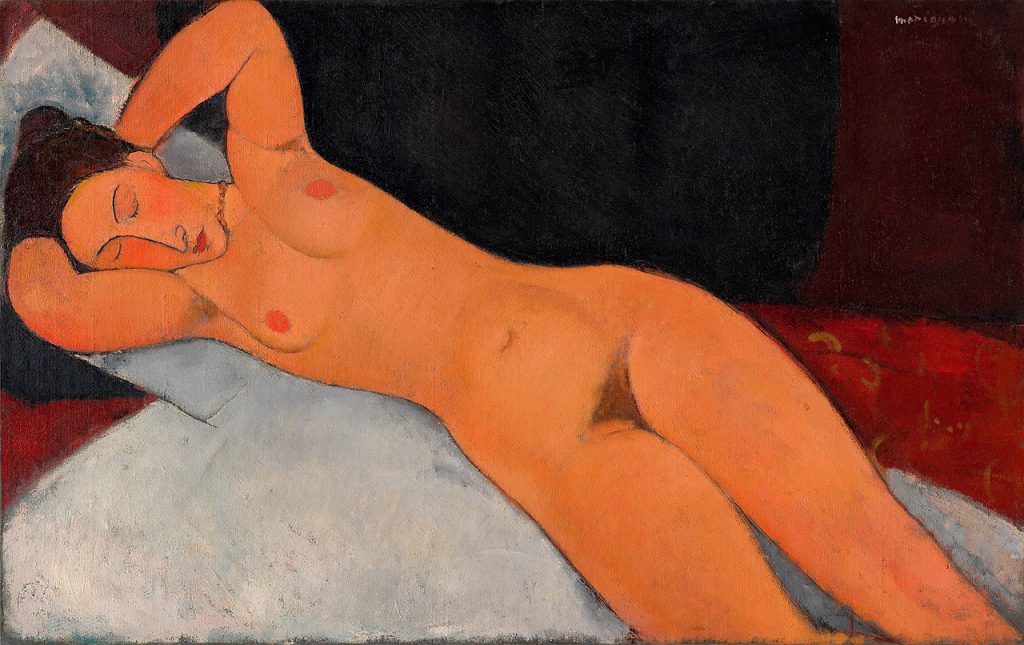
Modigliani started painting again around 1915, but his time as a sculptor greatly influenced how he painted. Modigliani’s sculptured heads had certain features that became common in his paintings. These features included long necks and noses, simplified facial features, and long oval faces. He contrasted with light and dark, less noticeable, making things appear flat and solid. He did this by creating strong outlines and using bright colours together.
Modigliani wasn’t an expert at drawing portraits professionally. Instead, he saw the portrait as a way to capture a person’s image using strong and expressive outlines, almost like creating a sculpture. He painted his friends from the artistic and literary community in Paris, like Juan Gris and Jacques Lipchitz. He also painted less well-known people like models, servants, and girls from the neighbourhood. In 1917, he commenced creating numerous large-scale artworks portraying women. These paintings are some of his best because they have bright, warm colours and curvy and attractive shapes. In December of that year, Berthe Weill arranged a special exhibition just for him in her art gallery. However, the police didn’t like the pictures of naked people and thought they were inappropriate, so they took them down.
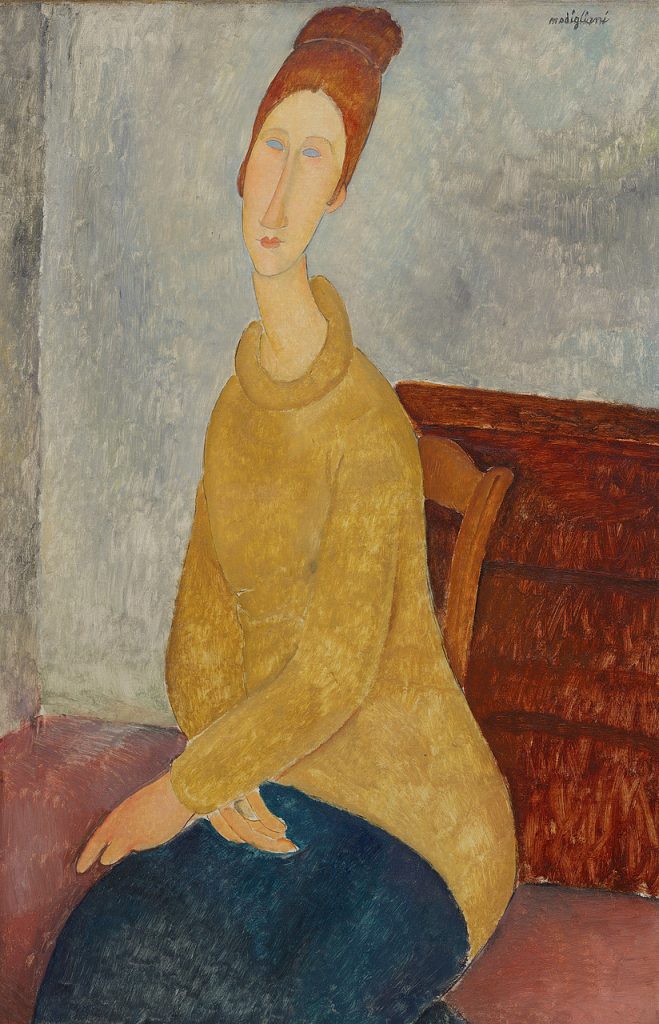
In 1917, Modigliani started a romantic relationship with the young painter Jeanne Hébuterne, and they moved to live together in the Côte d’Azur. Their daughter, named Jeanne, was born in November in the year 1918. His painting started looking much better with more precise lines and subtle colours. A calmer life and the Mediterranean weather did not make the artist healthy again. After returning to Paris in May 1919, he got sick in January 1920, and 10 days later, he passed away from a disease called tubercular meningitis. The following day, Hébuterne ended her own life and the life of their unborn baby by leaping out of a window.
The way he made his art was affected by the straight shapes of African sculptures and Renaissance artists’ focus on human beings. When many new ideas and artistic styles were being developed, such as Cubism, Absurdism, Surrealism, and Modernism, Modigliani did not want to follow or be limited by any of these popular movements. He was difficult to understand or define, and he always insisted on being different from others.
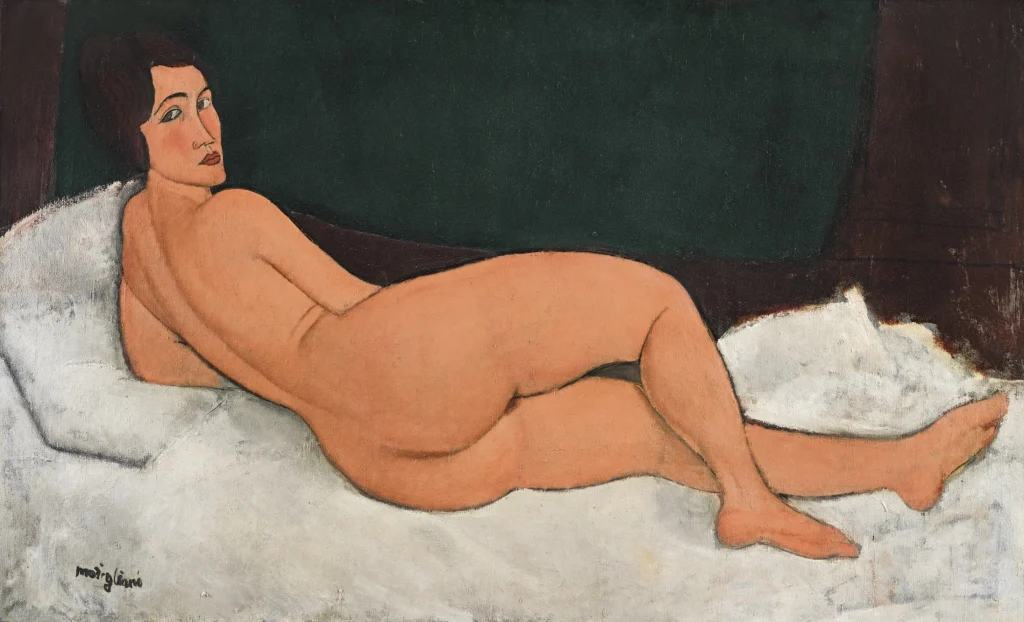
Even though his works didn’t make much money while he was alive, they became more and more liked after he died. Modigliani is now considered one of the famous artists from the 1900s. Modigliani didn’t belong to any specific art group but created a unique style by combining ideas from European art movements like Cubism and traditional African masks. His paintings and pictures that showed naked bodies were very different from what others had done before. He used new and different art-making methods and showed deep emotions and understanding of people’s minds. Like his close friend Chaim Soutine, other artists liked his work.
However, Modigliani’s artistic heritage is still connected to the romantic tale of the typical bohemian artist, tied to a life of indulgence and Jeanne Hebuterne’s unfortunate suicide right after Modigliani passed away. Until now, three movies have been made about his life that all focus on this legend. These movies show him as a passionate person with a reckless and harmful way of living. Furthermore, at least nine books about the artist have talked about this topic to different extents. One of them, Modigliani: Man and Myth, was written by his daughter, Jeanne Modigliani.
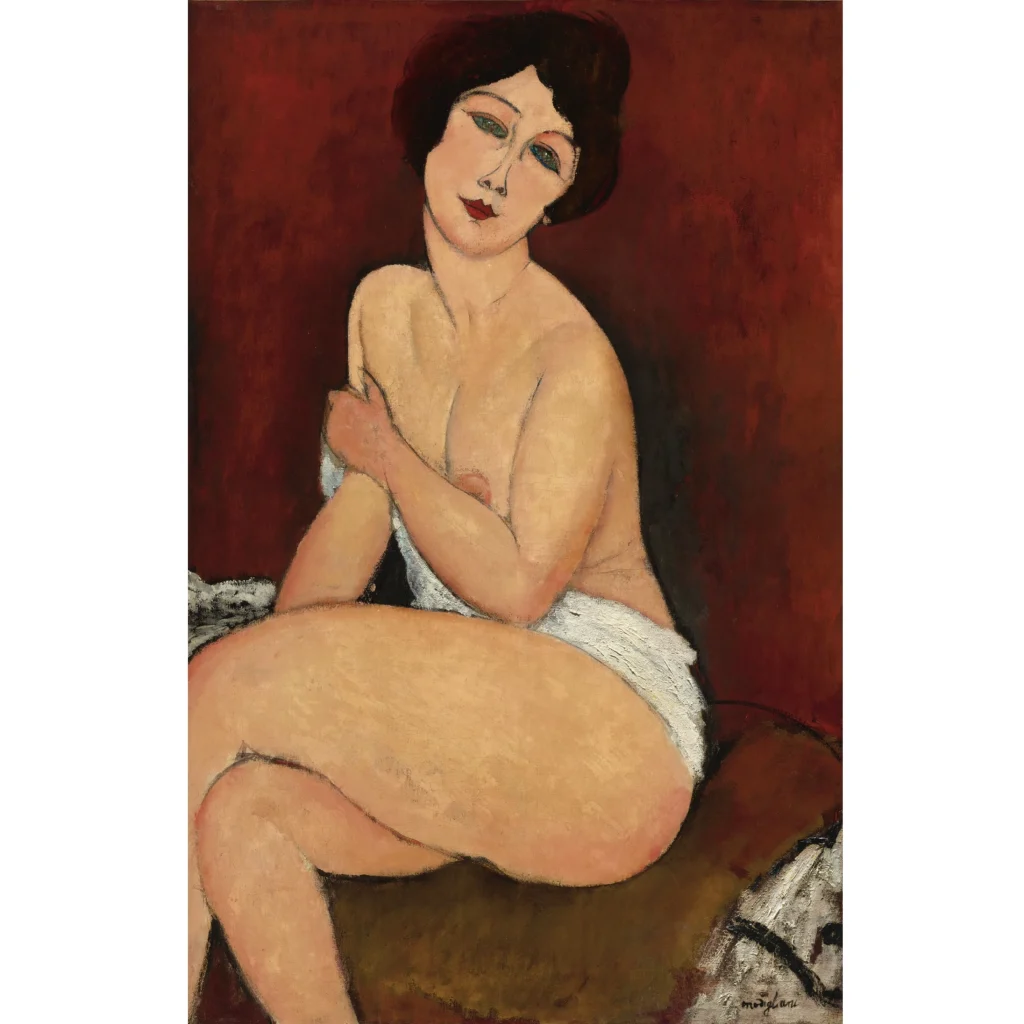
Many people easily recognize Modigliani’s artwork. He is considered as crucial as famous artists like Picasso and Mondrian during the 1900s. Sadly, he didn’t sell much of his work throughout his life. People knew him not only for his creative talents but also for his bad habits of drinking too much and taking drugs.
Amedeo Modigliani’s way of creating art is easy to recognize. Additionally, it differed from what most other people were doing then. Instead of using bright colours and abstract techniques like the Cubists and Post-Impressionists, Modigliani explored the human condition by creating portraits, a common and proven method in art history. Modigliani said that he was not interested in what is real or not natural but instead in people’s hidden feelings and instincts. He believed that we could discover these deeper meanings by looking into their eyes. That’s why he concentrated on painting people and portraits with such determination. Furthermore, the choice of colours in most of his artworks is remarkable and can be recognized as typically belonging to Modigliani. The utilization of vibrant and warm hues significantly contributed to developing his artistic approach.
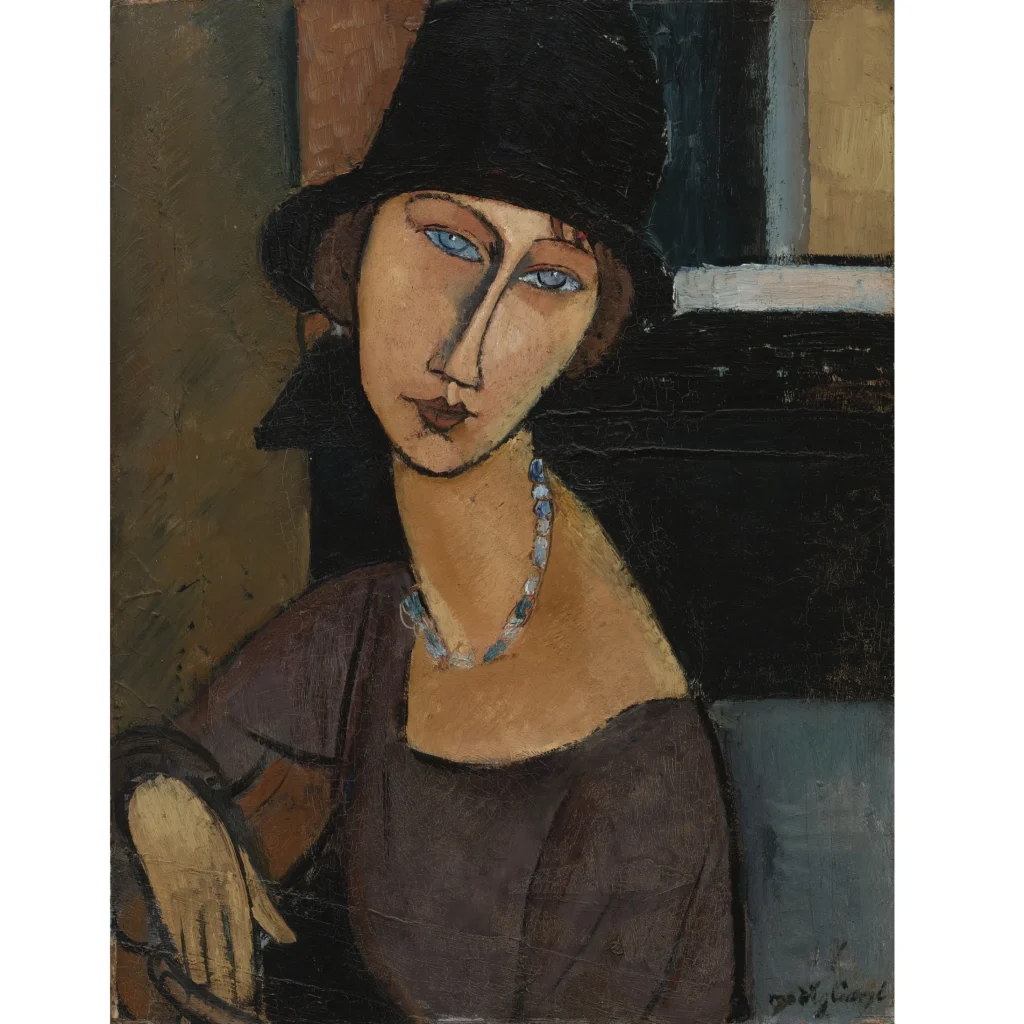
It should be emphasized that his contributions to the art world encompassed more than just painting. Modigliani was thought to have a greater inclination towards sculpting throughout most of his profession. Despite incorporating three-dimensional elements, his artwork maintains the presence of similar shapes found in his paintings. His sculptures, if anything, aided him in forming a more vivid perception of individuals and the surrounding world. The unique level of gravity in his three-dimensional artwork comes from the substantiality of stone sculptures, even though his paintings exhibit no flatness.
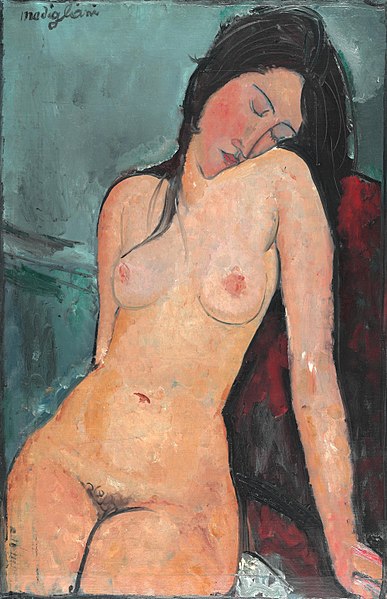
His friend Pablo Picasso influenced Amedeo Modigliani similarly, even though the result might have been different. It is commonly believed and widely discussed that Picasso’s painting Demoiselles D’Avignon, was inspired by African masks. Due to its historical and colonial connections, France was known for its collection of African masks. Despite not working as an artist for a long time, Amedeo Modigliani’s story captivates art lovers worldwide. Many books, plays, and movies have been made about his life since he died.

Contributor


